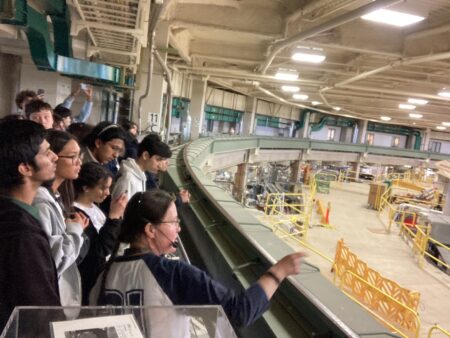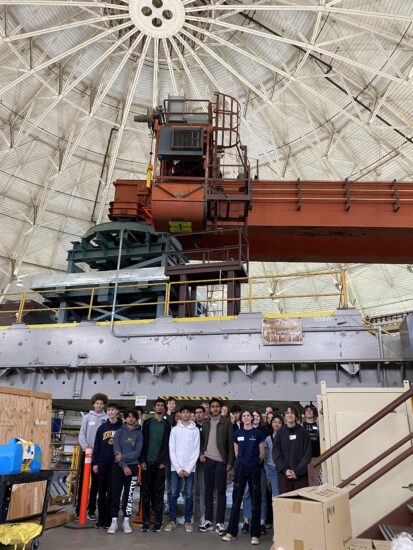On Saturday, April 27, Berkeley Lab’s Physics Division hosted the 2024 ATLAS Masterclass for 26 high school students (juniors and seniors) interested in high-energy physics. The program included introductory lessons and hands-on analysis of real data from the ATLAS Experiment, located at the Large Hadron Collider (LHC) at CERN.
 This masterclass series is hosted on a global scale by the International Particle Physics Outreach Group, with over 60 institutions participating annually. The event’s hybrid format enabled the Berkeley Lab team to include online participants as well as on-site participants. Berkeley Lab also partnered with TRIUMF, Canada’s particle accelerator center in Vancouver, to facilitate a combined data analysis presentation with student groups from other organizations across Canada and the US, enabling several hundred students to participate in the day’s program.
This masterclass series is hosted on a global scale by the International Particle Physics Outreach Group, with over 60 institutions participating annually. The event’s hybrid format enabled the Berkeley Lab team to include online participants as well as on-site participants. Berkeley Lab also partnered with TRIUMF, Canada’s particle accelerator center in Vancouver, to facilitate a combined data analysis presentation with student groups from other organizations across Canada and the US, enabling several hundred students to participate in the day’s program.
After learning the basics of particle physics and the ATLAS detector, the students got to analyze real data from ATLAS, which allowed them to see the Higgs resonance slowly emerge from the noise.
For the on-site participants, the day concluded with a tour of the Advanced Light Source. Before the tour, Ina Reichel gave a short presentation comparing and contrasting the LHC and ALS: Both are synchrotrons and use magnets to guide the particle beams. The LHC is actually two synchrotrons with counter-rotating beams, colliding them at four places where the four particle physics detectors are located, ATLAS being one of them.

Whereas the ALS uses electrons, the LHC uses protons or (fully stripped) lead ions. And most importantly, although both accelerators produce synchrotron radiation, the LHC’s synchrotron radiation is only in the frequency of far infrared light and considered a nuisance. At the ALS, synchrotron radiation is the desired product and spans from infrared through hard x-rays.
At the ALS, the group got to visit Building 15, where they saw some of the accumulator ring magnets as well as the spare superbend magnet that is currently housed there. The LHC mostly comprises superconducting magnets, whereas the ALS mostly uses electromagnets and permanent magnets.
The students not only learned a lot about particle physics in a single day, but they also got to see (parts of) a real particle accelerator and learned a bit about the science done at the ALS.
To read more about the ATLAS masterclass, go here.